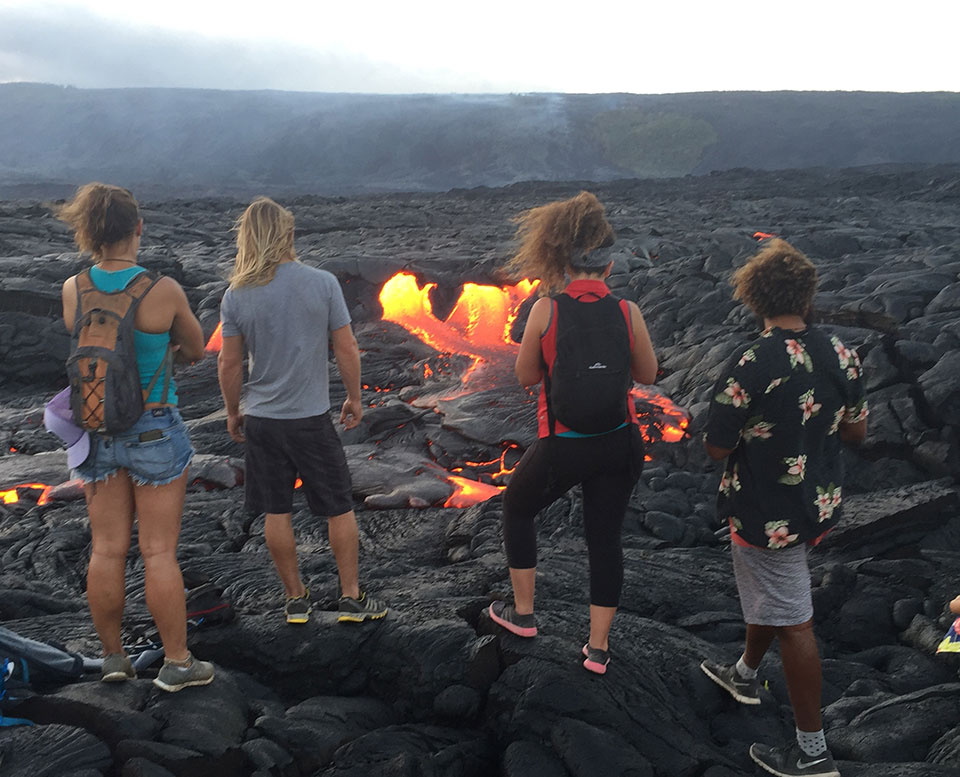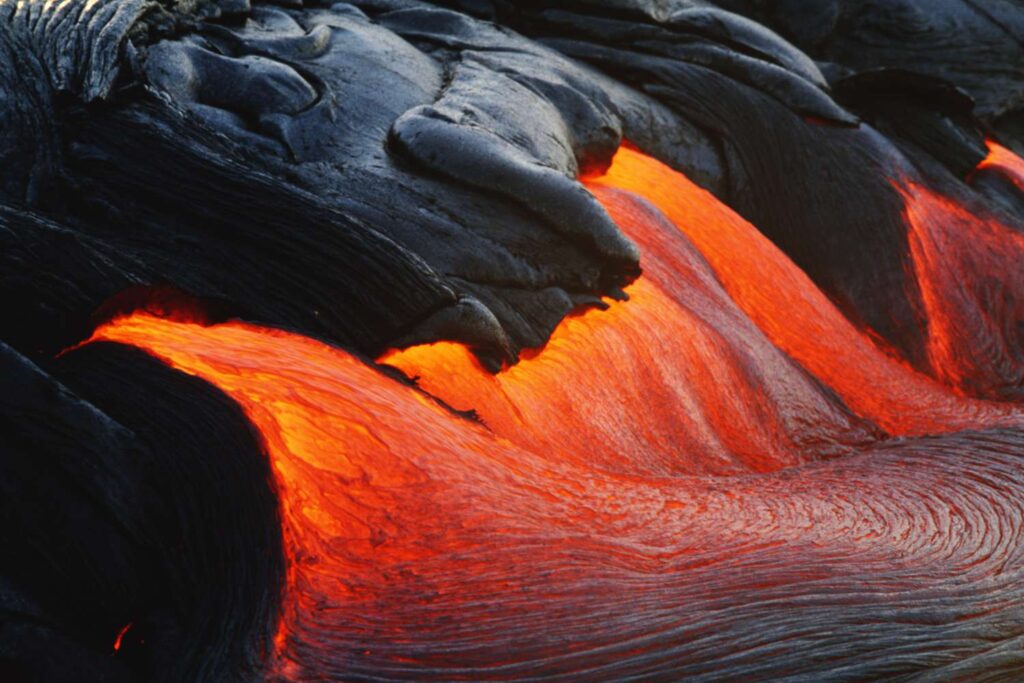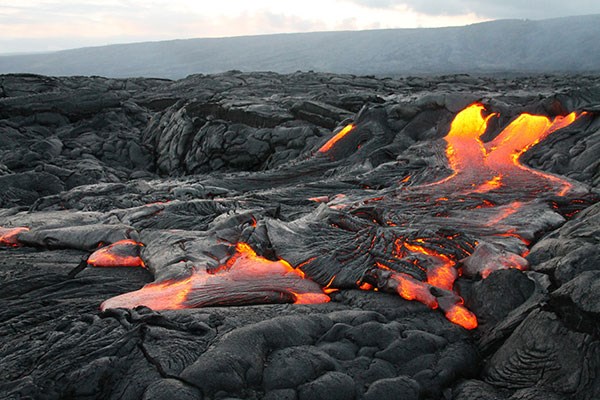If you’ve ever been captivated by the raw strength and beauty of nature, witnessing the power of lava flows is an experience like no other. But with such immense heat and danger involved, finding the best way to witness these incredible displays can be a challenge. Whether it’s taking a guided helicopter tour over active volcanoes or embarking on a hike to a lava viewing area, there are options available that will allow you to get up close and personal with this mesmerizing natural phenomenon. So, if you’re ready to witness the raw power of lava flows and create memories that will last a lifetime, let’s explore the best ways to do just that.

Choosing the Best Location
Considering Active Volcanoes
When choosing the best location to witness the power of lava flows, it is important to consider active volcanoes. These are the volcanoes that have recently had eruptions or show signs of imminent activity. Active volcanoes offer the opportunity to witness firsthand the incredible force of nature as the molten lava cascades down the slopes, creating a dramatic and mesmerizing spectacle. Some of the well-known active volcanoes include Kilauea in Hawaii, Mount Etna in Italy, and Mount Merapi in Indonesia.
Researching Safe Viewing Areas
While witnessing a lava flow in person can be a thrilling experience, it is of utmost importance to ensure your safety. Before embarking on your adventure, take the time to research safe viewing areas. These areas are designated by local authorities and provide a vantage point from where you can witness the lava flows without putting yourself in harm’s way. Be sure to check for any official guidelines or warnings regarding where to safely observe the lava flows.
Opting for Established Tourist Sites
Another important factor to consider when choosing the best location is to opt for established tourist sites. These sites have been frequented by visitors for observing volcanic activity and have well-defined safety protocols in place. Choosing established tourist sites ensures that you have access to the necessary amenities such as parking, visitor centers, and trained guides who can provide valuable insights into the geological significance of the lava flows. Additionally, these sites often offer educational opportunities to learn more about the volcanoes and their impact on the surrounding environment.
Timing Your Visit
Monitoring Volcanic Activity
Timing your visit to an active volcano is crucial to ensure that you have the best chance of witnessing a lava flow. Stay updated on the volcanic activity by monitoring official sources such as volcano observatories and geological surveys. These organizations provide real-time information regarding the activity levels, including any indications of upcoming eruptions or changes in the lava flow patterns. By staying informed, you can plan your visit during a period when the volcanic activity is at its peak, increasing your chances of witnessing the awe-inspiring spectacle of lava flows.
Checking for Eruption Warnings
Before visiting an active volcano, it is essential to check for eruption warnings. These warnings are issued by local authorities to notify the public about any potential hazards and risks associated with volcanic activity. Eruption warnings can provide valuable information on areas to avoid and any restrictions in place for visitor safety. By heeding these warnings and adjusting your plans accordingly, you can ensure a safe and enjoyable experience while witnessing the power of lava flows.
Choosing the Right Season
The season in which you choose to visit an active volcano can greatly impact your overall experience. Consider the climate and weather patterns of the region when planning your trip. Some seasons may bring heavy rainfall or extreme heat, which might affect your ability to witness the lava flows. Research the best season for lava flow viewing in your chosen location and plan accordingly. Additionally, be prepared for sudden weather changes, as volcanic areas can be unpredictable, and pack appropriate clothing and gear to ensure your comfort and safety.
Explore Uncharted Hawaiian Destinations
Preparation and Safety
Getting Informed about Volcanic Hazards
Before embarking on your journey to witness the power of lava flows, it is essential to get informed about volcanic hazards. Volcanic eruptions can pose various risks, including ashfall, toxic gases, flying debris, and lava flows. Understanding these hazards and their potential impacts is crucial for your safety. Research local resources, such as volcano observatories and geological surveys, to familiarize yourself with the specific hazards associated with the volcano you plan to visit. By having this knowledge, you can take appropriate precautions and make informed decisions during your trip.
Packing Personal Protective Equipment
Ensuring your safety during your lava flow viewing experience requires packing personal protective equipment. Protective gear like sturdy hiking boots, long pants, and long-sleeved shirts can shield you from the intense heat and potential hazards associated with volcanic activity. Additionally, it is essential to pack a dust mask or respirator to protect your respiratory system from volcanic ash and toxic gases. Don’t forget to bring sunscreen, sunglasses, and a hat to shield yourself from the sun’s harmful rays, as volcano viewing often involves spending time in open areas under direct sunlight.
Preparing for Extreme Conditions
Witnessing lava flows in person often means being exposed to extreme conditions. Be prepared for intense heat, unpredictable weather, and rugged terrain. Pack plenty of water to stay hydrated and snacks to maintain your energy levels during your excursion. It is also advisable to carry a first aid kit, a flashlight, and extra batteries in case of emergencies. Lastly, inform a trusted person about your plans and estimated return time, especially if you are venturing into remote areas without a guide, to ensure your safety.
Booking a Guided Tour
Benefits of a Guided Tour
Booking a guided tour is an excellent way to enhance your lava flow viewing experience. Professional guides are knowledgeable about the local volcanic activity, safety protocols, and the best locations for observation. They can provide valuable insights into the geological processes behind lava flows, making your experience more educational and enriching. Moreover, guided tours often include transportation, which eliminates the stress of navigation and allows you to fully immerse yourself in the observation and enjoyment of the lava flows.
Finding Reputable Tour Operators
When booking a guided tour, it is crucial to find reputable tour operators. Look for operators who have established a good reputation for providing safe and informative experiences. Read reviews, check their credentials and certifications, and ensure that their guides are experienced and knowledgeable about the volcanic destination you want to visit. Reputable tour operators prioritize visitor safety and adhere to ethical practices, making them a reliable choice for witnessing the power of lava flows.
Researching Tour Itineraries
Before finalizing your booking, take the time to research the tour itineraries offered by various operators. Consider the duration of the tour, the number of participants, and the activities included. Some tours may incorporate additional experiences such as hikes to viewpoints, visits to geological formations, or interactions with local communities. Evaluate your preferences and choose an itinerary that aligns with your interests and desired level of involvement. Researching tour itineraries ensures that you make the most of your trip and enjoy a well-rounded lava flow viewing experience.

Plan Your Dream Hawaiian Getaway
Photography Tips
Selecting the Right Camera Gear
Capturing the power and beauty of lava flows through photography can be a rewarding experience. To ensure you capture stunning images, select the right camera gear. A DSLR or mirrorless camera with interchangeable lenses gives you the flexibility to capture different perspectives and details. Wide-angle lenses are ideal for capturing expansive landscapes and the vastness of the lava flows, while telephoto lenses allow you to zoom in on specific details. Consider investing in a sturdy tripod to stabilize your camera and reduce the chance of blurry images, especially during low-light conditions.
Packing Essential Accessories
In addition to your camera gear, packing essential accessories can enhance your lava flow photography. Bring extra memory cards and batteries to ensure you don’t miss out on capturing pivotal moments. A lens cleaning kit is vital to keep your lenses free from ash or debris that may affect the image quality. Consider using neutral density filters to balance exposures and reduce the intensity of bright light, especially during daytime lava flow shooting. Lastly, a reliable camera bag or backpack will protect your gear from dust, moisture, and accidental bumps while navigating volcanic terrains.
Mastering the Art of Lava Flow Photography
Lava flow photography requires some specific techniques to capture the essence and power of the flowing magma. Experiment with long-exposure shots to create a sense of movement and depict the flowing lava as a dynamic force. Use a slow shutter speed to capture the fiery glow and create mesmerizing light trails. Pay attention to composition by incorporating foreground elements, such as rocks or vegetation, to add depth and context to your images. Experiment with different angles and perspectives to showcase the scale and intensity of the lava flows. Finally, be patient and open to improvisation, as capturing the perfect lava flow photograph often requires adapting to the ever-changing nature of the volcanic landscape.
Observation Techniques
Finding Safe Viewing Points
When observing lava flows, it is crucial to find safe viewing points that offer a good vantage for a close-up experience while ensuring your safety. Follow the guidelines provided by local authorities and tour guides to identify designated observation points. These areas are carefully selected to provide a clear line of sight and a safe distance from the active lava flows. Avoid venturing beyond designated areas, as it is essential to respect the inherent dangers associated with volcanic activity and minimize any potential risks to yourself and the surrounding environment.
Understanding the Behavior of Lava Flows
To fully appreciate the power of lava flows, take the time to understand their behavior. Lava flows can vary in speed, viscosity, and direction depending on the type of volcano and the characteristics of the lava itself. Learn about the different types of lava, such as pahoehoe (smooth and ropy) and aa (rough and blocky), and how these types manifest in the landscape. Understanding the behavior of lava flows can enhance your experience by allowing you to anticipate and appreciate the dynamism and transformative nature of the volcanic phenomenon.
Utilizing Binoculars and Telescopes
Binoculars and telescopes can enhance your observation experience by allowing you to see and appreciate the details of lava flows from a distance. These tools magnify the view, enabling you to spot intricate textures, patterns, and other fascinating elements. Binoculars with stabilized viewing can further enhance your ability to observe the nuances of the lava flow. Telescopes with the appropriate filters can also provide a closer look at specific features of the volcanic activity, such as lava fountains or fissures. Adding these tools to your observation repertoire can offer a broader perspective on the power of lava flows.

Experience Hawaii’s Unique Attractions
Exploring the Surrounding Environment
Taking in the Natural Beauty
While witnessing the power of lava flows is undeniably captivating, take the time to appreciate the surrounding natural beauty. Volcanic landscapes often boast stunning and unique features, including rugged terrain, colorful mineral deposits, and distinctive flora adapted to volcanic environments. Pause to take in the grandeur of the geological formations and the contrast between the solid lava and the lush vegetation that emerges in its wake. By immersing yourself in the surrounding environment, you can gain a deeper appreciation for the interconnectedness of the Earth’s geology and its impact on the creation of life.
Considering Additional Landmarks
If you have the opportunity, consider exploring additional landmarks in the vicinity of the volcano. Some volcanic regions are home to fascinating geological features such as lava caves, craters, or calderas that offer further insight into the volcanic processes. Embarking on additional hikes or guided tours can open doors to unique experiences and expand your understanding of volcanic activity beyond the lava flows. Research local attractions and geological sites in the area to maximize your exploration and make the most of your visit.
Engaging in Recreational Activities
Volcanic areas offer a wide range of recreational activities that can complement your lava flow viewing experience. Take advantage of opportunities for hiking, horseback riding, or even helicopter tours to gain different perspectives of the volcanic landscape. Some volcanic regions also provide activities such as hot spring bathing or snorkeling in volcanic-created formations. Engaging in these recreational activities allows you to fully immerse yourself in the unique natural environment while creating lasting memories of your lava flow adventure.
Interacting with Local Communities
Learning from Indigenous Cultures
When visiting volcanic regions, take the opportunity to learn from the indigenous cultures that have lived in harmony with these powerful natural phenomena for generations. Indigenous communities often have deep-rooted knowledge and wisdom regarding volcanoes, which can enrich your understanding of the power and significance of lava flows. Engage in conversations, visit museums or cultural centers, and participate in guided tours led by indigenous guides to gain insights into their traditional practices, beliefs, and deep respect for the volcanic landscapes they call home.
Supporting Local Economies
One of the most impactful ways to interact with local communities is by supporting their economies. Purchase local crafts, artworks, or food products to contribute directly to the livelihoods of the communities living near the volcanoes. Dine at local restaurants and patronize locally owned accommodations to ensure that your tourism dollars benefit the local economy. By supporting local businesses, you express gratitude for the opportunity to witness the power of lava flows while actively contributing to the sustainable development of the communities that call these volcanic regions home.
Participating in Community Events
Immerse yourself in the local culture by participating in community events or festivals. Many volcanic regions have celebrations or rituals centered around their volcanic heritage. These events offer unique experiences to witness traditional dances, music performances, and cultural ceremonies that showcase the connection between the local communities and the volcanoes. Participating in these events not only provides a deeper understanding of the cultural significance of the volcanic landscapes but also fosters connections and shared experiences with the local communities.

Environmental Considerations
Respecting Protected Areas
When visiting volcanic areas, it is essential to respect and adhere to any protected areas. These areas are designated to preserve the fragile ecosystems and geological formations that surround the volcanoes. Follow designated trails and avoid venturing into restricted zones to minimize your impact on the environment. Additionally, avoid littering and take any waste with you to ensure the preservation of these natural wonders. By respecting protected areas, you contribute to the long-term sustainability of the volcanic landscapes and the species that inhabit them.
Minimizing Footprint and Impact
In addition to respecting protected areas, make a conscious effort to minimize your footprint and impact while visiting volcanic regions. Stick to designated paths and avoid trampling on vegetation or disturbing wildlife habitats. Stay on established trails to prevent erosion and preserve the integrity of the volcanic formations. Use designated restroom facilities or follow proper waste disposal practices to minimize pollution and maintain the cleanliness of the environment. By practicing responsible and sustainable tourism, you play a crucial role in preserving the beauty and resilience of volcanic landscapes for future generations.
Becoming an Advocate for Conservation
As a witness to the power of lava flows, you have the unique opportunity to become an advocate for conservation. Share your experiences and knowledge with others to raise awareness about the significance and fragility of volcanic environments. Educate yourself on ongoing conservation efforts and engage in initiatives that support the protection of these natural wonders. Consider supporting organizations or projects that focus on volcanic conservation and restoration. By becoming an advocate for conservation, you contribute to the long-term preservation of these unique and awe-inspiring landscapes.
Reflecting and Sharing Experiences
Journaling Insights and Emotions
A meaningful way to reflect on your lava flow viewing experience is to journal your insights and emotions. Take a few moments each day to record your observations, feelings, and any significant realizations that arise during your visit. Reflecting through writing allows you to delve deeper into your personal connection with the power of lava flows and enables you to revisit your experiences in the future. Whether it’s a physical journal or a digital platform, capturing your journey through words can be a powerful way to preserve and share your personal growth.
Sharing Knowledge and Photos
Once you’ve returned from your lava flow adventure, share your knowledge and photos with others. Educate your friends, family, and community about the power and significance of lava flows. Share your photos on social media platforms or create a dedicated online gallery to showcase the captivating beauty of volcanic landscapes. Use captions or descriptions to provide context and highlight the geological processes behind the lava flows. By sharing your knowledge and images, you inspire others to appreciate and respect the power and importance of volcanic activity on our planet.
Educating Others about Lava Flows
Beyond sharing your personal experiences, take the opportunity to educate others about lava flows and their scientific significance. Offer presentations or workshops at local schools, community centers, or environmental organizations to raise awareness about volcanic activity and its impact on the Earth’s geology. Collaborate with educators or scientists to create educational resources or participate in outreach programs that focus on teaching about volcanoes and lava flows. By becoming a lava flow ambassador, you contribute to the collective understanding of these powerful geological phenomena and inspire a sense of wonder and respect for the natural world.
